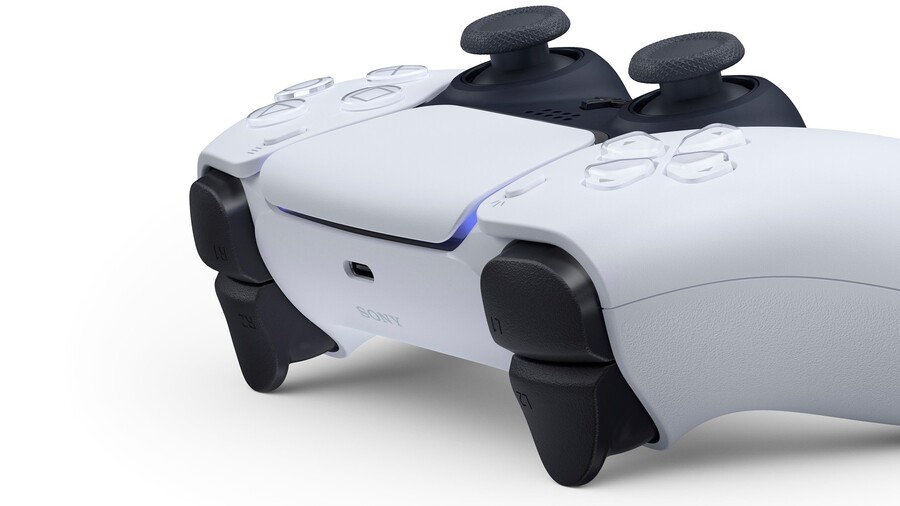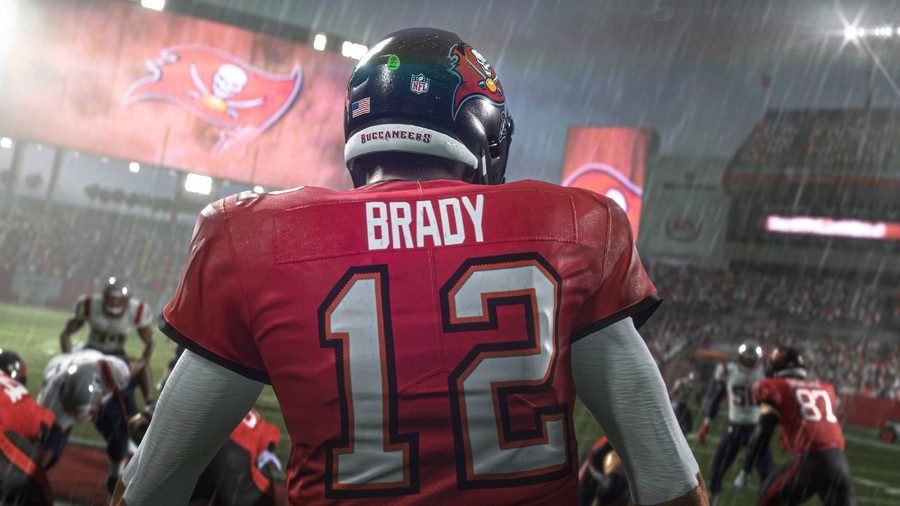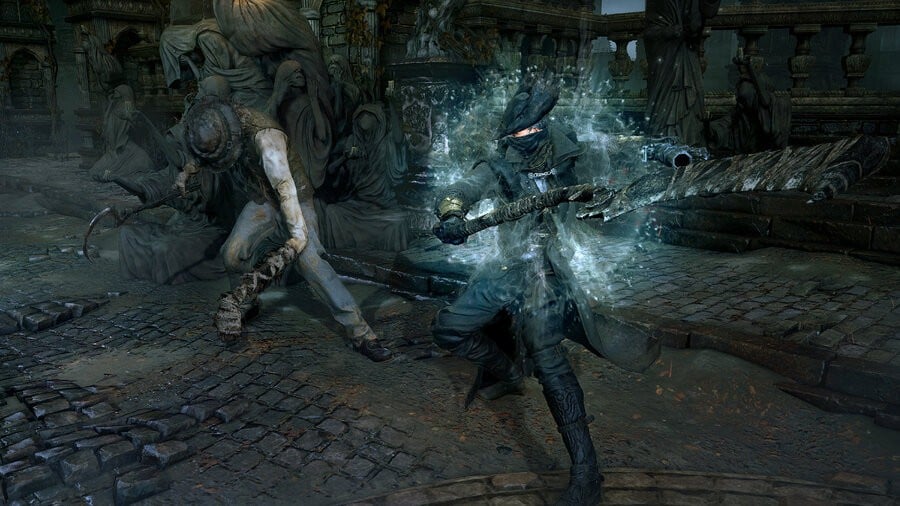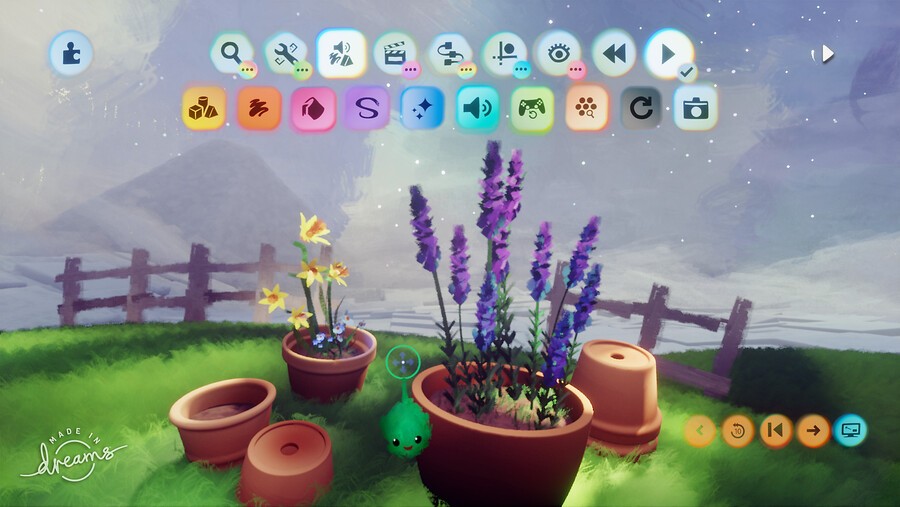
Not everyone’s happy with Sony’s decision to exclude DualShock 4 support when playing PlayStation 5 games, but if there’s one advantage it’s that developers will have more incentive to utilise the unique features of the DualSense controller. And while the likes of haptic feedback and adaptive triggers have been somewhat overlooked by fans, we reckon the latter in particular could have a huge impact on the immersion of next-gen experiences.
To be clear, this technology is totally different to the rumble triggers found in Xbox One controllers. The idea is that there’s a programmable motor inside the L2 and R2 buttons, which allows developers to change the tension based on what’s happening on screen. Here are just some of the ways we reckon the feature could be used to improve a variety of different games, but we’d love to hear your thoughts and suggestions in the comments section as well.

Drawing Arrows
Okay, let’s get the most obvious example out of the way first and foremost, because Sony itself has been touting this one ever since the DualSense was unveiled. Games like Horizon Forbidden West will allow you to "feel" the tension of your bowstring as you draw arrows back, perhaps even tightening if you hold onto the string for too long. It’s a simple but effective showcase for the feature, and we can’t wait to try it out in Guerrilla Games’ next-gen title.

Fatigue in Sports Games
Aside from a little stamina bar on screen, it’s almost impossible to tell which of your players are gassed when you’re playing FIFA, Madden NFL, NBA 2K, or any other sports games. So here’s a simple but effective solution: the triggers tighten depending on how tired your players are. For example, if you’re running into space as PSG forward Kylian Mbappe in the first few minutes of a game, there should be little resistance. But making that same run in Extra Time, with the Champions League final on the line… Much more difficult. You could even apply the same concept to non-sports games; Grand Theft Auto V, for example, could do away with its antiquated “mash to run” mechanic, and replace it with the adaptive triggers to more effectively reflect your GTA Online character’s energy levels.

Accelerators and Brakes
Haptic feedback is probably going to prove more impactful in racing games, as you physically “feel” the change in tarmac and the grip of your car. However, the adaptive triggers could still have a lot to offer. Jamming the brake at high speeds, for example, will require more exertion as you attempt to slow your car before hitting a hairpin bend. You could also imagine the accelerator being gentle to press as you carefully feather it around a corner, but much stiffer if you’re trying to thrape it through a bend.

Gun Triggers
What about guns, then? R2 is typically reserved for pulling the trigger, and we already know that titles like Ratchet & Clank: Rift Apart will use the DualSense’s new technology to mimic the “texture” of different weapons. The sequel’s Enforcer shotgun, for example, will let you fire two rounds or one, and you can physically feel the difference as you pull the trigger. We could imagine the same being true in other shooters: imagine a laser rifle that requires charging – you’d be able to feel the trigger tighten as the energy increases. Or how about a machine gun in a more grounded first-person shooter? Its sheer power should make it more difficult to fire than, say, Agent 47’s signature silenced pistol in Hitman 3.

Grip and Climbing
Climbing in games like Uncharted has admittedly gotten stale, but Naughty Dog had planned to incorporate stamina and other mechanics in A Thief’s End. Imagine how these systems could feel with the DualSense controller: pulling the trigger would be much more difficult when you have a less stable hold, and the tension could even tighten as you cling on and your stamina falls. Even new releases like Fall Guys could benefit from this feature: a last gasp lunge to grab a tail from your rivals could require more effort than an easy snatch from a nearby opponent early in a round.

Grappling Hook
Building on the aforementioned, everyone loves a grappling hook, don’t they? There’s a lot that could be done with this tried and trusted navigation mechanic. Firstly, haptic feedback should be able to accurately reflect the “swirl” of swinging a rope and the “clank” of it connecting. Then you have the tension: the triggers should tighten when the rope is taut and loosen at the apex of each swing, reflecting the feeling of weightlessness as you battle gravity backwards and forwards. Super cool!

Stamina in Action Games
In games like Dark Souls and Bloodborne, stamina is very much a mechanic that needs to be managed. While it replenishes rather quickly, you can’t just hammer away at enemies because you’ll quickly run out of steam. The visual feedback in FromSoftware games is fantastic, because it demonstrates when your character is gassed. But what if you could physically “feel” that exhaustion through the tension of the triggers as well? Not only would it add to the immersion of the gameplay, but it’d also provide crucial feedback through the controller.

Painting
It’s becoming increasingly common for titles to let your creative juices flow, with livery editors in racing games a particularly popular feature. So what if you could get more control over your paint strokes by the DualSense’s triggers adapting depending on how broad you want your brush to be? This would be a particularly welcome addition in Dreams, where the triggers are an important part of sculpting and decorating your creations.
How do you think the PS5 controller’s adaptive triggers could be used to improve immersion in games? Let us know which of our ideas you like, and share some of your own in the comments section below.





Comments 29
I think the feel of pulling the triggers in FPS games will be an excellent addition along with grappling hooks and climbing. I also think that fatigue in sports games is an interesting point and could be another welcome addition. Yep drawing arrows is the obvious one here.
The one that bothers me only slightly is that driving games will be able to simulate the feeling of running a tyre off the track depending on grip which is brilliant but I don't use triggers to accelerate or break (I am old school and prefer X and square). Does this mean I will be forced to use triggers or will there be feedback on buttons too if not do I lose out on this experience?
Great examples of how it could be used. Looking forward to what the devs come up with.
All great ideas tbh and I really hope some of them come to fruition.
I am a little worried about the affects this will have in the lifespan of the controller though which I haven’t seen anyone discuss.
The more you play, the looser the trigger becomes over time. With actual resistance placed on the triggers from features implemented by developers, will this cause a quicker wear and tear on controllers?
I completely understand that these are QA’d and tested vigorously. But it can’t compare to a variety of games and gamers utilising the new feature and a vast range of playing hours per day over many years.
I’ve had 3 controllers this generation. One suffered the analog drag fault and one of my current ones is having issues with the R2 trigger. No matter how hard I hold, my car in GTA, players in FIFA and shooting in COD is seemingly capped and won’t go or play any faster.
Incredibly excited for the tech though very worried about wear over time. Especially considering these things are likely to be more expensive than the current £40-£50.
@Mostik only adaptive buttons are L2 and R2.
There's nothing in those suggestions that vaguely interests me personally but I'm sure plenty of people will love the new features and it's cool stuff like this exists but it's not for me. I detest rumble and haptics. Hopefully there are options to disable it all completely.
@Jacko11 I imagine any looseness issue you would normally encounter should be eliminated by this as the mechanism is now completely different. It would’ve been entirely spring based in the past (I’m guessing here so if you know better please correct me) and I’d expect some metal fatigue to be a normal wear and tear issue with springs.
I think it's like from DS3 to DS4. I wouldn't want to go back and use a DS4 on the PS5 🤷♂️
Edit
When you think of the criticism about the battery, the front light, the sticks ... it's weird that some people dont want improvement
@MarcG420 Thanks for this, just hope I am not forced to use triggers in GT7 it just doesn't feel right I didn't like having to use triggers in NFS etc.
Hopefully this can be turned off - depending just how much tension is actually applied to the Triggers. It feels like something that could "get in the way" of enjoying certain games - I think there is such as a thing as too much immersion.
Why would I want a machine gun to be harder to shoot?! Forget that - I want to be awesome, I don't want realism. If I am playing a From Software game and the triggers start getting tighter and tighter every time I attack, I might get annoyed - the games are stressful enough at times.
This is one of those things that may be neat, but I think a lot can go wrong here.
Also, it better be quiet.
Depends on how much tension they can add, but my low-grade carpal tunnel cringes at the idea of this. Might reduce the amount of time I'm able to play a game in a single session.
None of these suggestions seem that interesting to me. However, perhaps it's one of these things where the benefits can only truly be appreciated after trying it out.
I'm wary this may be being overhyped a bit.
It's exciting to hear what it could be like but I still can't quite imagine it feeling as impressive as they're saying. We'll see, I guess.
I can see competitive players or those who take their gaming seriously not wanting any of this. Anything that potentially makes playing a game more difficult for the sake of immersion won't go down well with some. But I assume you'll be able to disable it all anyway.
I have arthritis, I don’t need any new types of tension while playing, have plenty as it is. 😖
@Jacko11 that has been my thoughts on them, my controllers are shared, while I'm the one who uses them the most I have kids that sometimes do and I've had one that had drag and became useless and my main one now, the light doesn't work any more (no great loss) but the vibration doesn't work on it any more. If my kids who have disabilities and can be quite heavy handed use them will they last?
I hope the added feel just allows for on screen prompts and HUD to fade in importance.
@ShogunRok
Maybe there is a way to personalise your controller for any game and in that case it could be interesting for anyone?
@Shigurui I'm with you on this one. For me it's an accessibility issue. Both of those features will make it harder for me to play with the disability I have. Which is why I was hoping to be able to use the DS4 with PS5 games
@JJ2 Seems the controller is getting software updates, I think that's going to pave way to at least some sort of customisation of the features.
Yeeeeah, most of these examples sound hypothetically interesting, but a literal pain to deal with in reality - even in the best case, intentionally fatiguing players' hands sounds like a recipe for long-term injury, and is pretty much a guaranteed disablable option for accessibility's sake, which means the devs still have to put the effort into making and balancing a traditional alternative anyway.
Depends on how much tension they can add, but my carpal tunnel cringes at the idea of this.
It may reduce the amount of time I'm able to play a game in a single session.
I've had rumble switched off for years, unfortunately can't also switch off that absolutely stupid wasteful light, generally it's just annoying and adds nothing, the new dual shock might not be so crap
I want the haptic feedback to make me feels the different between succesful sword slash and blocked sword slash in ghost of tsushima, we can already heard and saw the difference, it will be way cooler if we can feels it
Oh, and also the swinging in spider-man.
@GAMER-GlRL You can turn off light. Just push PS button and choose (I don't remember exactly) "devices"? There you can turn off build-in speaker, turn off rumbling and turn off lightbar. ☺️
For others who don't understand this skepticism about haptic, it is something like sixaxis. Something, that is thought to have big potential, but only thing it brings is muscle tension of your middle fingers... As same as no one uses sixaxis because it never worked properly, no one uses touchpad on select button because we don't have 20cm long thumbs, than no one will let haptic on because it will be fun for 10 presses and than it start to be annoying and finger hurting.
And those who cannot understand we want DS4 compatibility, I would give anything to use my DS3 on PS4 because it was way lighter, and much more comfortable. And if it is right DS5 is heavier than DS4 than it should be shiped with some support attaching apparatus to hang it around neck (like Guitar hero guitar) because right now DS4 feels to me too heavy after about 3 hours of gaming.
I rather fight digital enemies with my digital hero instead of fighting controller with my fingers.
@Ackrin - Thankfully it's not an accessibility issue for me, though as I rapidly approach my 50's I do find my hands ache with prolonged gaming sessions. I just find pad rumble unbearable, always have, it ruins immersion for me and the haptics I've experienced on an Xbox pad were like a jackhammer. Truly awful. Hopefully this new pad allows any and all vibration to be turned off and you can game in relative comfort.
@ShogunRok disable the features and you end up with a DualShock 4.
It really is an interesting feature. However I believe that only first party studios will make full use of it, much like 3D audio.
Sounds great as long as you can adjust it or turn it off in the accessablity settings. I have severe weakness in my left hand/fingers from a spinal injury and some of these suggestions would make the games unplayable for me.
Disappointed that these new controllers are looking to big to fit in my small sized under pants.
Leave A Comment
Hold on there, you need to login to post a comment...